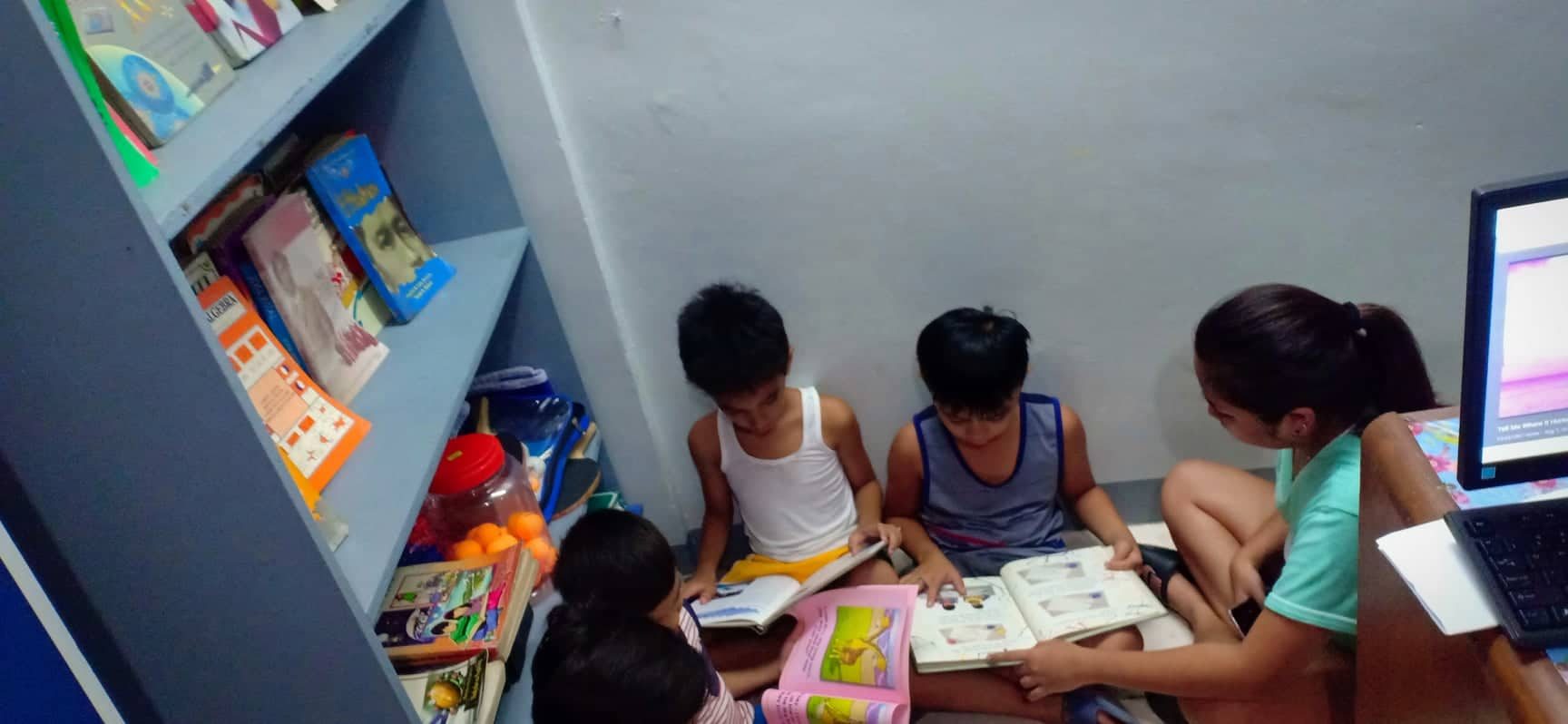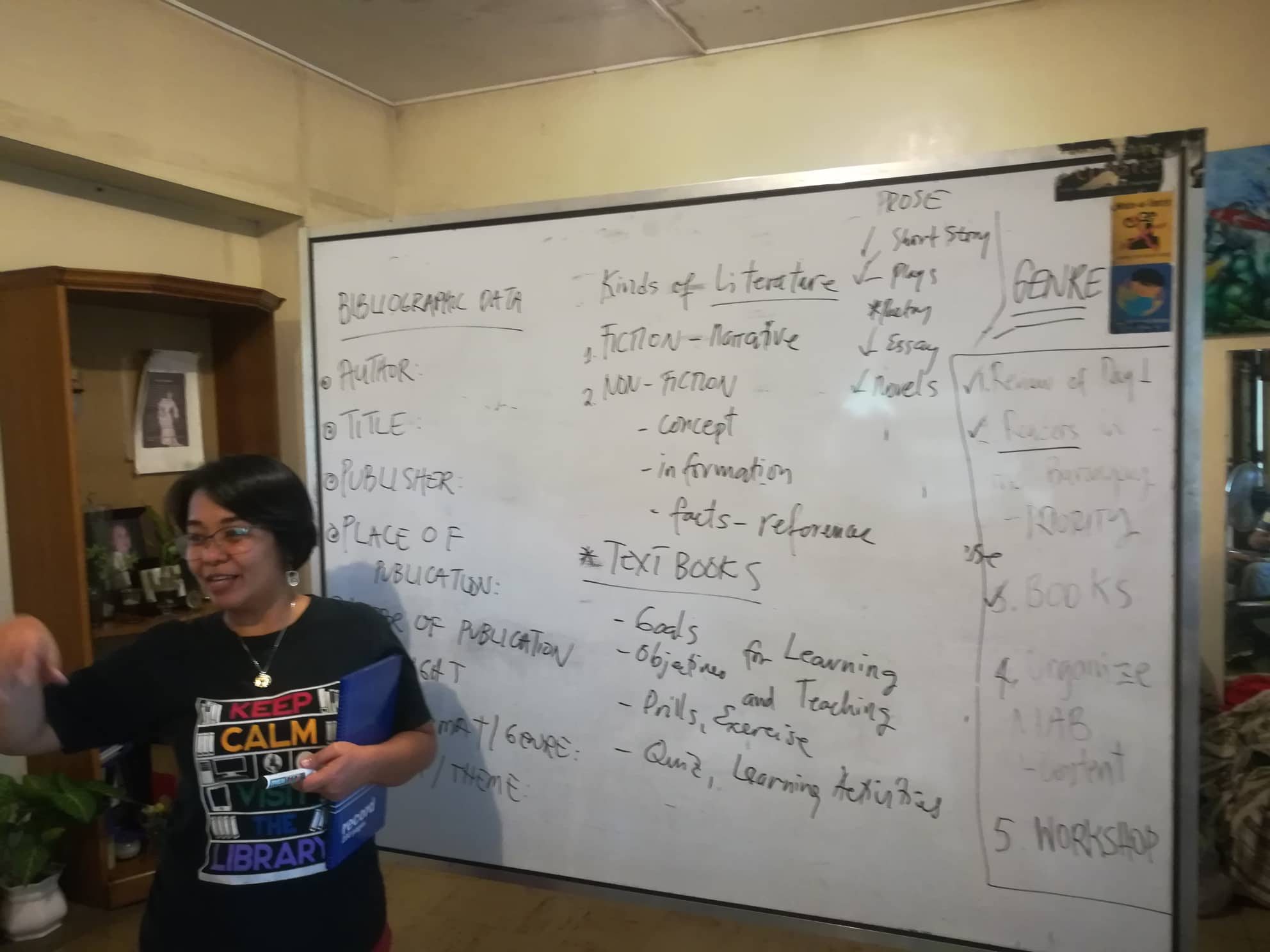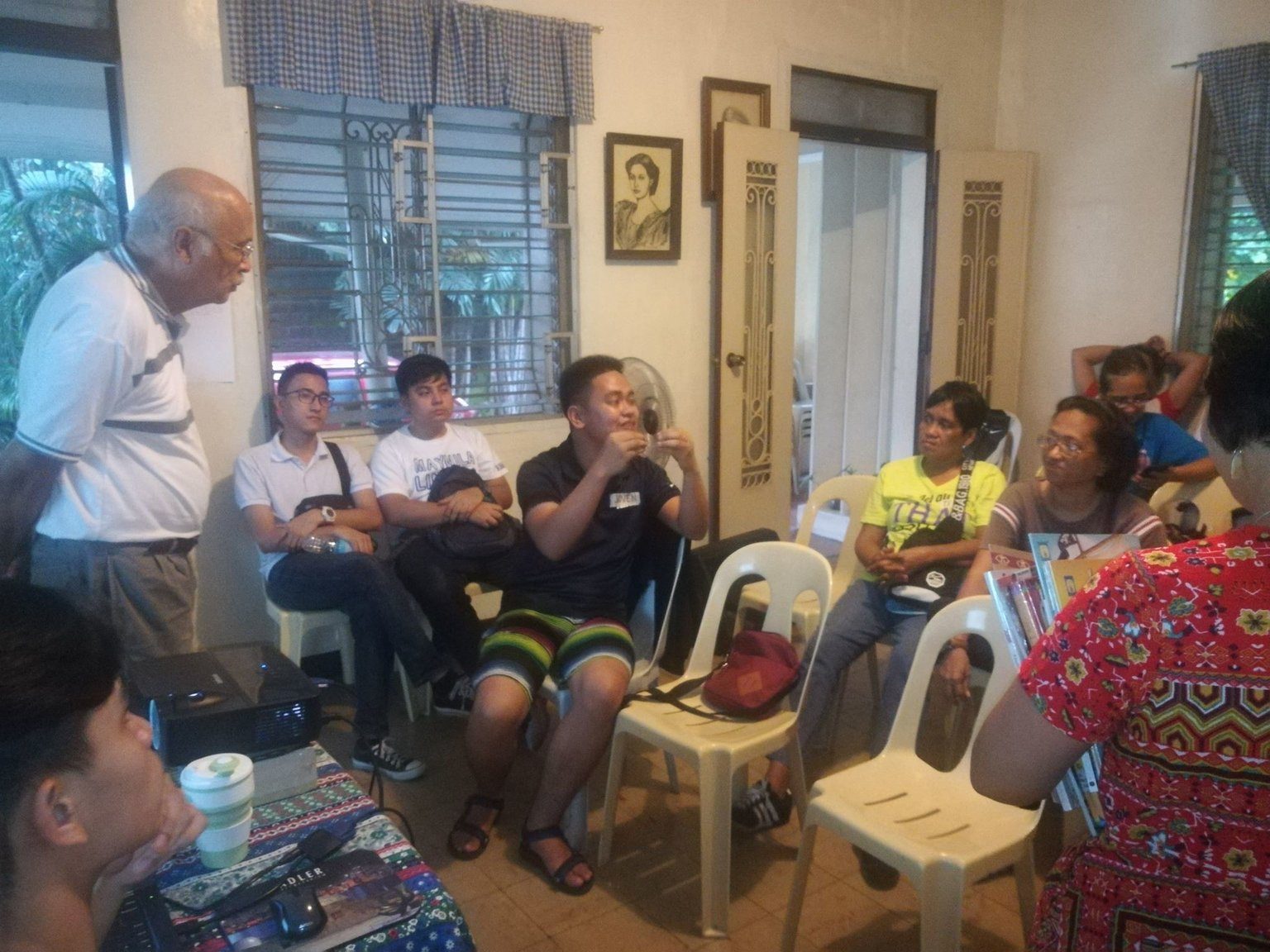SUMMARY
This is AI generated summarization, which may have errors. For context, always refer to the full article.

MANILA, Philippines – There are countless stories and lessons to be found in books, enough for people to describe reading as dreaming with open eyes.
Books can be expensive and not everyone can afford to buy them. Public libraries can help address this problem but in the Philippines, libraries are few, intimidating, and not so accessible to poor communities. (READ: Filipinos barely know if there are libraries near their homes)
In Pandacan, the cultural group Samahang Sining at Kultura ng Pilipinas (SSKPil) and church-based New Covenant Prayer Community (NCPC) sought out barangay and youth leaders to create a solution. Why not establish mini-libraries in barangay centers, which are normally open to constituents the entire day?
In early 2019, the two groups launched the Munting Aklatan sa Barangay (small community library) or MAB project with 9 barangays in Pandacan, a small historic district in Manila.
The two groups solicited books in various fiction and non-fiction genres from friends and other people, and turned them over to Sangguniang Kabataan (SK) and barangay officers so they can set up reading spaces in their respective barangay centers.
The project aims to create a pool of barangay educators that will manage the libraries and organize learning activities. It hopes to encourage residents to walk in and read or borrow books for pleasure or reading requirements.
Access to books, a human and legal right

Teacher-librarian and award-winning author Zarah Gagatiga pointed out that underRepublic Act No. 7743, the Philippine government has to establish and fund city and municipal libraries as well as barangay reading centers.
She added that grassroots access to libraries is part of Filipinos’ right to education and a tool to fight poverty.
Gagatiga is the public relations officer of the Philippine Association of School Librarians and currently represents the library sector in the Philippine Board on Books for Young People.
“A purpose of a library is to elevate the reading taste, open up new patterns of thinking, encourage us to imagine and see other worlds. Barangays need to see that having reading centers is valuable for economic growth. Information is economic power,” she explained.
Gagatiga, who has been providing basic library system and maintenance training to the barangays involved in the MAB project, suggested that barangays should collect government publications like ordinances and make them accessible to everyone.
“It’s important to know existing laws and policies. MAB can help make this information accessible to the barangays,” she said.
She described MAB as an ambitious project– a global idea of library-building in a local setting. The challenge is to sustain it, which is why it is important to get the support of the local government units, she added.
Barangay reading centers as a safe place for the community
Before MAB, SSKPil was managing a community library in the patio of Pandacan’s Sto Niño Church in 2012. However, they had to close it in 2018 when the new church administration decided to use the space for another purpose.
Instead of donating the books to the district or city library, the NCPC proposed to distribute the books and shelves to barangays instead.
Thus the idea of the MAB was born, bringing the library closer to the people.
With members who are also barangay leaders, the groups were able to get the buy-in of 9 barangays including youth leaders. SSKPil will handle the acquisition of books and resource partners. NCPC will monitor and supervise the project, while barangay educators will manage the reading centers.
Many of the barangays set up the reading spaces at the daycare section of their barangay hall. These are the barangays that participated: 870, 871, 872, 867, 859, 864, 836, 835 and 837.
Through the MAB, SK Chair Joven Rivera said the youth can be empowered by what they learn and read.
“Magkakaroon ang mga kabataan ng ligtas na lugar kung saan puwede nilang ipakita kung ano ang meron sila (Our youth will have a safe place where they can cultivate their skills),” Rivera said.
NCPC member and barangay kagawad Juliet Romano agreed. “My barangay beside the railroad tracks is home to many indigents. We have a program where we teach about 20 children good manners and conduct and the Word of God. A barangay reading center can be a good place for us to hold storytelling activities,” she said.
Romano said the MAB project also represented hope.
“My barangay faces demolition because of a road-widening project. Life is challenging but I feel positive because we come up with inspiring projects,” she shared. “Nangangarap ako na darating ang panahon kung saan ang mga bata naman ang magiging guro sa susunod na henerasyon (I dream of a future where the children we teach now will someday become teachers themselves).”

Encouraging children to love books
In a 2018 study of the Programme for International Student Assessment (PISA) released in 2019, the Philippines placed the lowest in reading comprehension among 79 countries. (READ: [ANALYSIS] Dismal PISA rankings: A wake-up call for Filipinos)
Barangay kagawad Marjorie Cardiño believed that lack of access to books and reading spaces was partly to blame for this.
“Our challenge is to encourage children to continue reading once they go home from school, instead of playing with gadgets,” she added.
Cardiño shared that the MAB is organizing a calendar of fun learning activities for children in 2020 to encourage them to read. (READ: [OPINION] Raising the scores in reading comprehension through book clubs)
Small project with big potential
SSKPil and NCPC are inviting partners to help support the needs of the project. Funds are needed to improve the administration and infrastructure of the libraries. Some barangays do not have bookcases, while others are able to provide only a desk and a few chairs for readers.
“Our small community libraries should serve as wells of knowledge, a kind of informal education as well as a good source of leisure, for Pandacan residents. Through the MAB, books will now reach the hands of children and adults at the grassroots level of our communities,” shared SSKPil Board Member Sixto Carlos.
“MAB is a small project yet it has the potential to make a sustainable impact on our society. It can be replicated in other districts and cities,” he added.
To know more about this project, you may contact SSKPil at sskpil@gmail.com. You may also visit @SSKPilipinas on Facebook. – Rappler.com
Michelle Baena Ciriacruz is a blogger, communications professional, and volunteer leader in various causes involving animal welfare, environmental protection, and community development, among others.
Add a comment
How does this make you feel?
There are no comments yet. Add your comment to start the conversation.